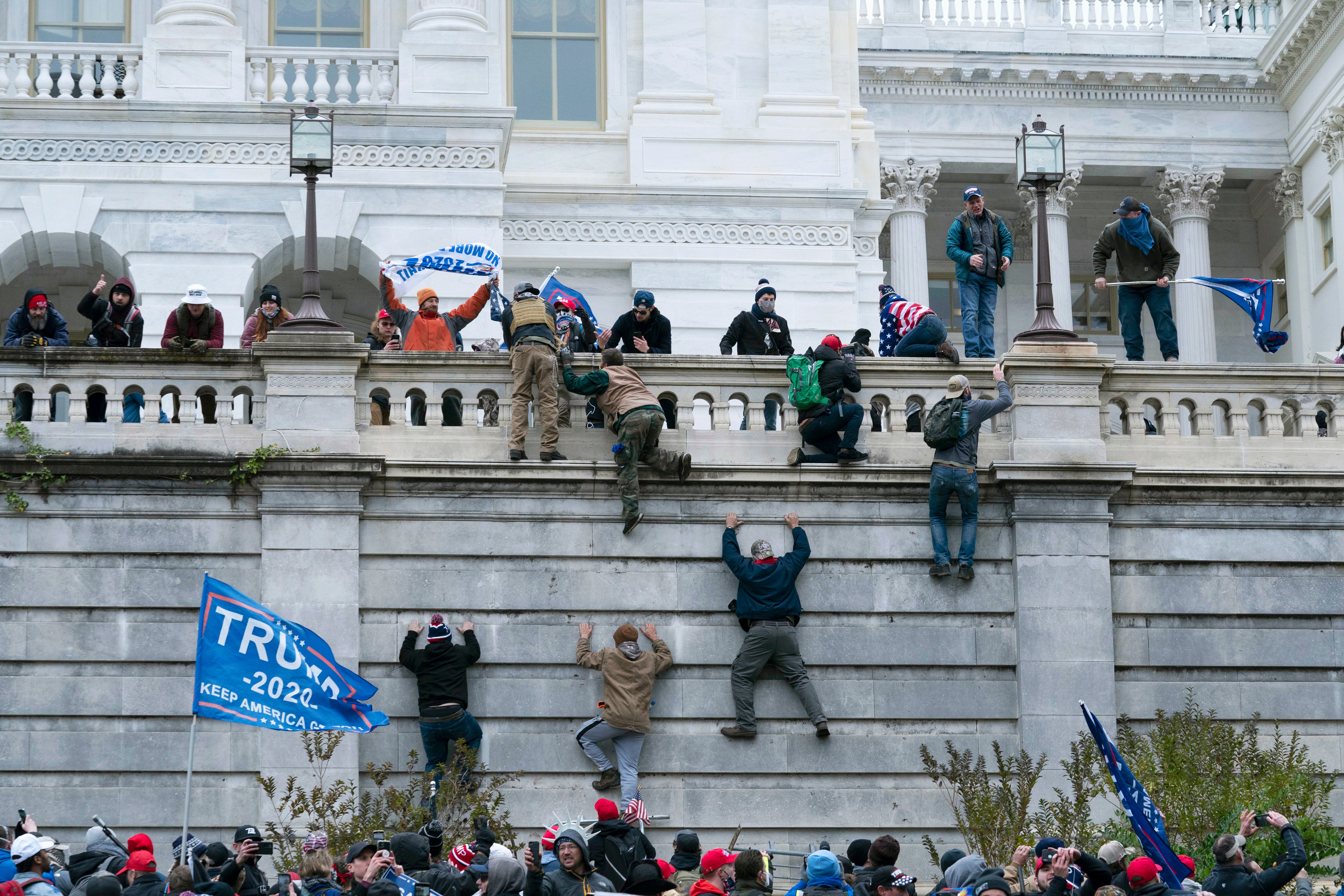Capitol attack stirs memories of Oklahoma bombing
The attack on the U.S. Capitol by an angry mob of President Donald Trump’s supporters shocked many Americans who thought such a violent assault by their fellow countrymen wasn’t possible

Your support helps us to tell the story
From reproductive rights to climate change to Big Tech, The Independent is on the ground when the story is developing. Whether it's investigating the financials of Elon Musk's pro-Trump PAC or producing our latest documentary, 'The A Word', which shines a light on the American women fighting for reproductive rights, we know how important it is to parse out the facts from the messaging.
At such a critical moment in US history, we need reporters on the ground. Your donation allows us to keep sending journalists to speak to both sides of the story.
The Independent is trusted by Americans across the entire political spectrum. And unlike many other quality news outlets, we choose not to lock Americans out of our reporting and analysis with paywalls. We believe quality journalism should be available to everyone, paid for by those who can afford it.
Your support makes all the difference.The attack on the U.S. Capitol by an angry mob of President Donald Trump’s supporters shocked many Americans who thought such a violent assault by their fellow countrymen wasn’t possible.
But for Oklahoma City bombing survivor Dennis Purifoy, the Capitol assault was a clear parallel to what happened at the federal building in his hometown more than 25 years ago. The anger against the government, a radicalized perpetrator fueled by right-wing extremism, a desire to spark a revolution — all commonalities with Timothy McVeigh whose fertilizer truck bomb ripped apart the Alfred P. Murrah Federal Building on April 19, 1995, and killed 168 people.
Even the 1978 book that inspired McVeigh, “The Turner Diaries,” includes a fictional attack by white supremacists on the U.S. Capitol.
“The disdain for government and the disdain for government public servants is another parallel that I would draw,” said Purifoy, who was working in the Social Security Administration office on the building’s first floor and suffered minor injuries when the bomb detonated.
While people around the globe expressed outrage at the Capitol insurrection, the feelings are particularly intense for some in Oklahoma, which witnessed firsthand the deadly repercussions of violent anti-government extremism.
A memorial and museum that now stand on the bombing site in downtown Oklahoma City is one of the state’s most popular destinations for visitors — typically drawing more than 500,000 each year. School children who arrive at the memorial by the busload learn about the dangers of political violence.
Gates to the memorial mark the times, 9:01 and 9:03 a.m., with a reflecting pond between them representing 9:02, the minute the explosion occurred. Empty metal chairs represent each person who died, and the “Survivor Tree,” a gnarled American elm that withstood the blast, now stands on a small hill and shades the memorial below.
The museum’s executive director, Kari Watkins, says one similarity between the incidents was how government workers in both buildings were just going about their jobs, unaware of the impending danger.
“It is America, and we should expect to go about our business in a government building without fear of being killed or in the middle of a riot when you’re in there,” Watkins said.
There are also differences. McVeigh’s hatred of the federal government was specifically fueled by the government’s raid on the Branch Davidian religious sect near Waco, Texas, that left 76 people dead, and a standoff in the mountains of Ruby Ridge, Idaho, that left a 14-year-old boy, his mother and a federal agent dead. McVeigh picked April 19 because it was the two-year anniversary of the Waco siege’s fiery end.
“These people in Washington are exercised about the election and the fraud they believe took place," said David Cid, a retired FBI agent and former director of the Memorial Institute for the Prevention of Terrorism. “It’s an important distinction.
“These people in Washington thought they were trying to save our government. McVeigh and his cohorts wanted to destroy it."
The rioters who laid siege to the U.S. Capitol were a melting pot of militia members, white supremacists, paramilitary organizations and fanatical supporters of Trump.
“For the first time in a long time, you’re not only bringing hate groups, but you’re bringing everyday citizens into movements that have been hijacked by those with alternative beliefs and who are pushing alternative theories, such as Q-Anon, Proud Boys, Boogaloo Boys and things like that," said retired FBI agent Eric Jackson, who worked in the agency's counter-terrorism division and led a task force on anarchists.
On the same day the riot broke out at the U.S. Capitol, about 1,000 Trump supporters showed up at the Oklahoma Capitol, and while angry about what they believed was an unfair election, the event was peaceful.
“By no stretch of the imagination was there a call to arms or any kind of physical action at all," said state Rep. Jay Steagall, a Trump supporter who spoke to the group in Oklahoma. “It was really a First amendment type of rally and protest."
Despite the time that has passed since the Oklahoma City bombing, said Purifoy, the bombing survivor, there remains in Oklahoma a lingering sensitivity “that people who work in government buildings are not evil, they’re just trying to help people with housing or Social Security or whatever.
“There may be some of that. I hope there still is. I hope we haven’t lost that awareness."
___
Follow Sean Murphy at www.twitter.com/apseanmurphy